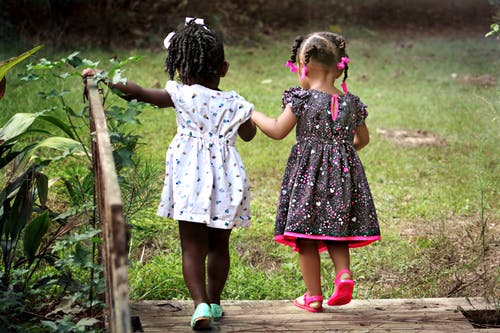
Around 24 months, your toddler begins to enter a new phase of play as they are able to use a more complex form of pretend or symbolic play. During this phase, their creativity and imagination is much more active, and toys and items become different things to play with. Maybe a cardboard box is transformed into a car! Your toddler may sit inside it, steering a pretend steering wheel, pressing a pretend brake, and beeping a pretend horn. Perhaps an open book becomes an airplane for action figures to fly on.
As far as the social aspect of play, your 24-month-old may still be doing parallel play sometimes, but is also typically engaging in associative play where he will observe other children playing nearby and sometimes do the same activity as that other child. Children will sometimes talk to each other during associative play using words or gestures and at 24 months, he may even start to take turns with a playmate, but you will likely need to help a little bit with this process.
Cooperative or collaborative play, where children play together in an interactive way usually does not occur until closer to 30 months. Keep providing opportunities for your toddler to practice playing around other children and keep providing fun and interesting settings to encourage creativity, curiosity and discovery!
References:
Zero To Three
American Academy of Pediatrics
Weisberg, D. S, Hirsh-Pasek, K., & Golinkoff, R. M. (2013). Guided play: Where curricular goals meet a playful pedagogy. Mind, Brain, and Education, 7(2), 104–112.
Pellis, S. M., & Pellis, V. C. (2006). Play and the development of social engagement: A comparative perspective. In P. J. Marshall & N. A. Fox (Eds.), The development of social engagement: Neurobiological perspectives (pp. 247–274). Oxford, UK: Oxford University Press.
Marcon, R. (2002). Moving up the grades: Relationships between preschool model and later school success. Early Childhood Research and Practice, 4, 517–530.
Pellegrini, A. D., Dupuis, D., & Smith, P. K. (2007). Play in evolution and development. Developmental Review, 27(2), 261–276.

